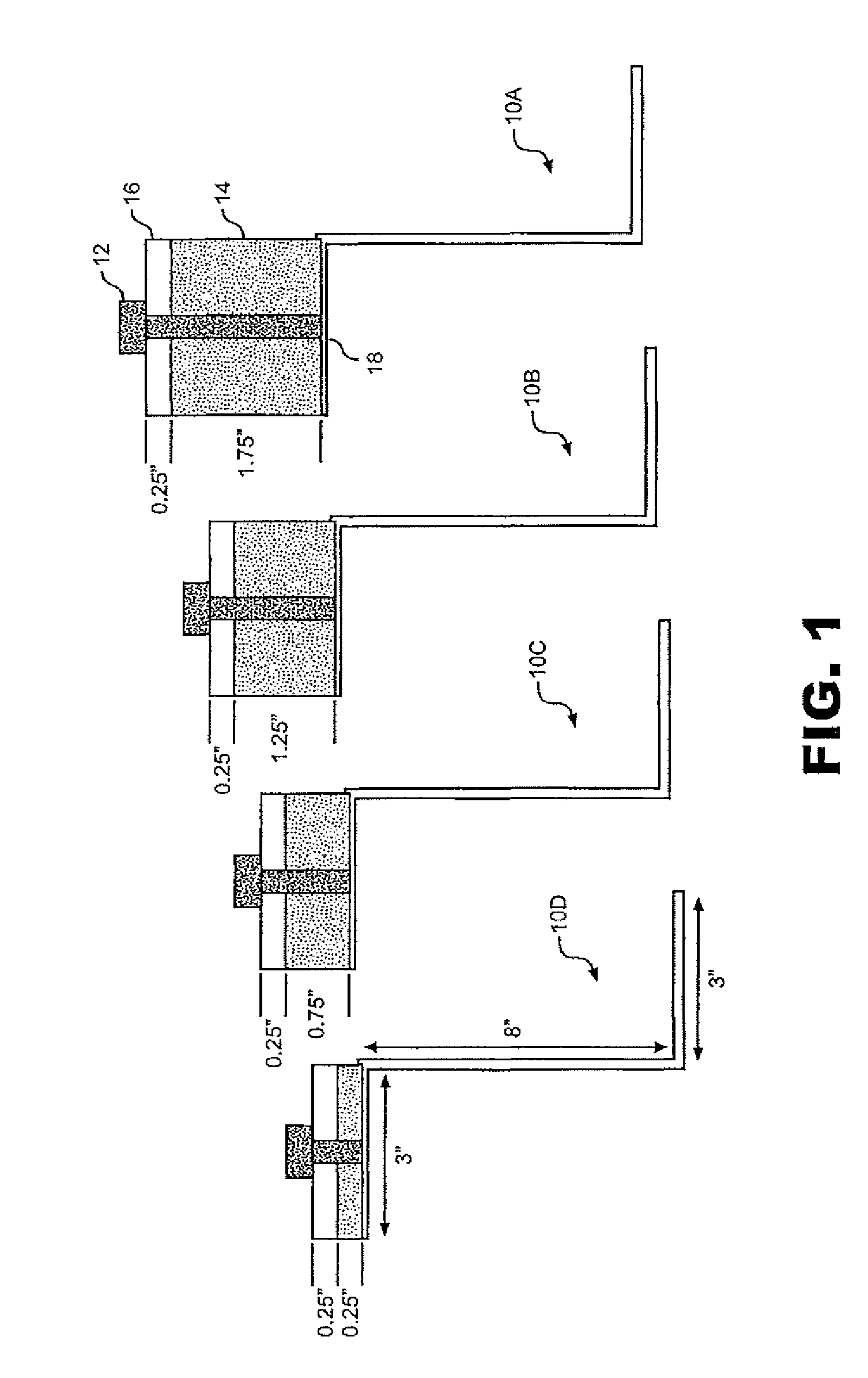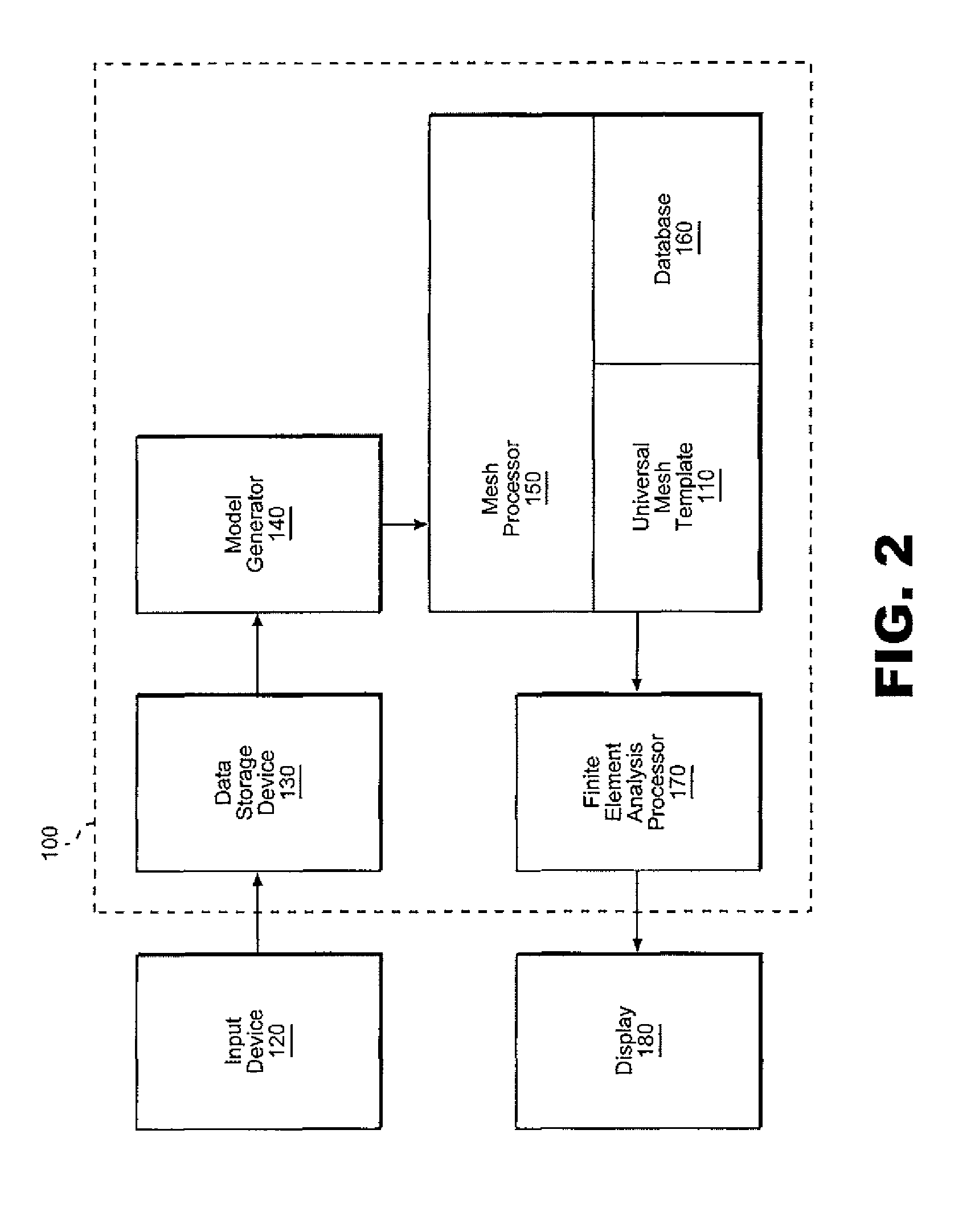System and method for performing thermal analysis on a building through universal meshing
a technology of universal meshing and thermal analysis, applied in the field offinite element analysis, to achieve the effect of reducing time, effort and expense, and high thermal conductivity valu
- Summary
- Abstract
- Description
- Claims
- Application Information
AI Technical Summary
Benefits of technology
Problems solved by technology
Method used
Image
Examples
Embodiment Construction
[0011]With initial reference to FIG. 1, base frames 10a-10d represent plural base frame configurations of a building. This figure is basically presented to illustrate that base frames 10a-10d represent a fair range in material and thermal properties. In general, after the particular building structure of the invention has been meshed, the meshed finite elements are used to conduct a FEA of the structure, employing one of several commercially available FEA processors which utilize the mesh area elements of the modeled object to analyze the effect of boundary value field equations. At this point, it should be realized that finite element analysis is used herein to cover various known finite analysis techniques, including finite element and finite difference techniques. Once the analysis is conducted, the results may then be studied to identify implications of the particular construction. Although this figure separately illustrates different potential building construction models, the ...
PUM
 Login to View More
Login to View More Abstract
Description
Claims
Application Information
 Login to View More
Login to View More - R&D
- Intellectual Property
- Life Sciences
- Materials
- Tech Scout
- Unparalleled Data Quality
- Higher Quality Content
- 60% Fewer Hallucinations
Browse by: Latest US Patents, China's latest patents, Technical Efficacy Thesaurus, Application Domain, Technology Topic, Popular Technical Reports.
© 2025 PatSnap. All rights reserved.Legal|Privacy policy|Modern Slavery Act Transparency Statement|Sitemap|About US| Contact US: help@patsnap.com



